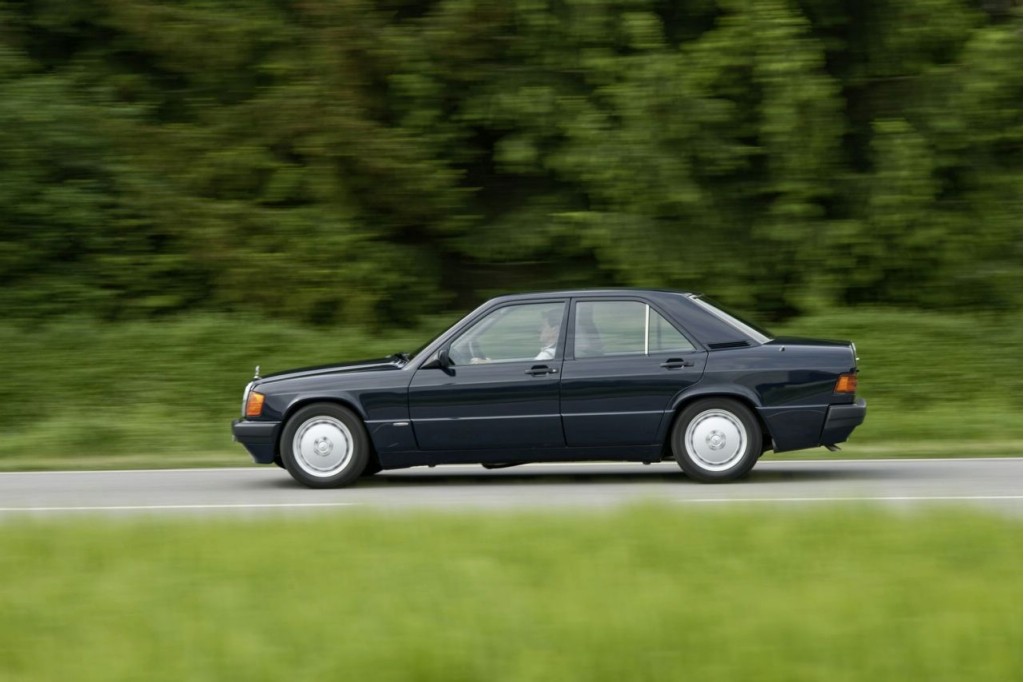
Mercedes-Benz 190 D BlueEfficiency, based on 1992 Mercedes 190 E 2.6 diesel
Now, this is cool. You've likely seen the Mercedes-Benz diesels of the 1980s and 1990s chugging along somewhere or other.
But how much better are today's clean diesels than the solid old oil-burners of 20 years ago that still power those sturdy survivors?
Back to the future: 1992 to 2009
Mercedes-Benz set out to show us exactly how much faster and cleaner they are. The company started with a European 190 E 2.6 from 1992, a diesel C-Class model not sold in the US, a groundbreaking car at the time for the refinement of its fully encapsulated "whisper diesel" engine.
Then it fitted the latest clean diesel from its 2009 Mercedes-Benz C 250 CDI BlueEfficiency, a modern diesel also not current offered in C-Class models sold today in the States.
Bear in mind that today's C-Class is actually larger than the its predecessor of 1992. The wheelbase is longer, and it has more interior space, better aerodynamics (drag coefficient of 0.27 versus 0.34), and far more safety features. It's also 850 pounds heavier.

Mercedes-Benz 190 D BlueEfficiency, based on 1992 Mercedes 190 E 2.6 diesel

Mercedes-Benz 190 D BlueEfficiency, based on 1992 Mercedes 190 E 2.6 diesel
Twice the torque, two-thirds quicker
But the engine is where the real differences show up. Today's four-cylinder common-rail turbodiesel puts out 204 horsepower, replacing the anemic 132-hp original, and twice the torque.
And if you've ever driven behind an old Benz diesel as it moves away from a stop light, you'll believe this: The 0-to-62-mph time is now 6.2 seconds, just one-third of the original's leisurely 18.1 seconds.
Mileage: 32 mpg to 48 mpg
The new engine has far better pollution controls, and yet consumes less fuel: 48 miles per gallon (4.9 liters per 100 km) on the European cycle, versus 32 mpg (7.3 l/100 km) for the original.
For the US market, we should note, additional emission control equipment would have to be fitted to comply with regulations in all 50 states.
Four-cylinder diesel to return?
And Mercedes-Benz hasn't sold a diesel four here in years, though based on its presentation at the New York Auto Show, it will likely offer a four-cylinder diesel E-Class in the US within two years.
Still, it's a clever way to point out just how advanced--in performance, in fuel efficiency, and in emissions reduction--today's latest clean diesel engines really are.
[Mercedes-Benz via WorldCarFans]













